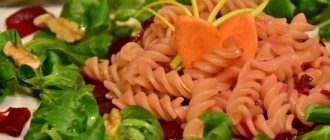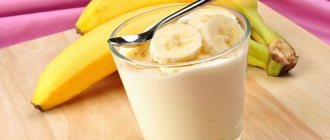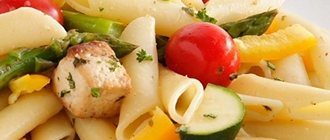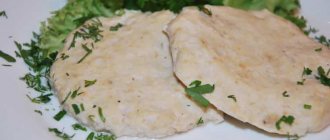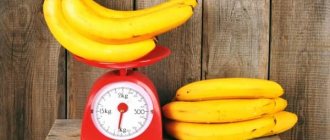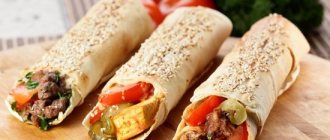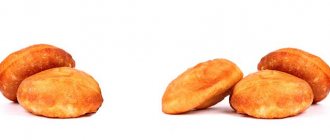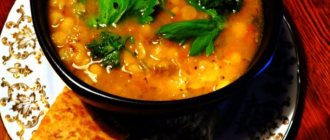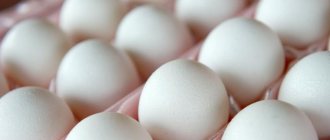How many calories are in pasta
Pasta (or macaroni) is a specially shaped and dried product made from wheat flour.
Protein fortifiers and flavoring additives are added to the dough, and eggs are added to increase the nutritional value. The benefits of pasta , and these are pasta, horns, feathers, vermicelli, noodles, are as follows:
- The presence of complex carbohydrates , which take a long time to digest and create a feeling of fullness. This property is used in the nutrition of athletes before long, exhausting training and competitions.
- The presence of vitamins B and PP in pasta made from durum wheat and 2nd grade flour.
- The protein content is higher than in bread, especially when enriched with eggs.
- Fiber contained in pasta made from durum wheat accelerates intestinal motility and is a natural adsorbent.
- Allows you to diversify side dishes in your diet.
The calorie content of 100 g of pasta is more than 300 kcal if it is made from premium flour or contains additives.
The “negative” qualities of pasta are:
- high calorie content;
- a large load on the pancreas and an increase in blood sugar when eating boiled pasta;
- significant starch ;
- combined with fats, sauces, spices.
This is a limitation for the inclusion of pasta in the diet of patients with obesity, diabetes mellitus, atherosclerosis, gastrointestinal diseases, incl. with a tendency to constipation.
When calculating calorie content, it is important to take into account not only their variety, but also the method of preparation. Thus, the energy value of boiled pasta is only 98 kcal, and fried pasta is 176 kcal . To find out how many calories are in pasta , enter its weight in grams in the Pasta section in the calculator form below. To calculate the number of kilocalories in naval pasta (on average about 180 kcal), you need to sum up the calorie content of all the ingredients included in the recipe of the dish.
Useful article:
How many calories are in 100 grams of pasta?
Pasta is not only tasty, but also a healthy product. Due to the content of vitamin B in products made from durum wheat, a person feels a surge of strength and energy for a long time. Amino acids help normalize sleep and mood, and fiber helps remove all harmful substances from the body and restores intestinal function.
The Italian product differs from the domestic one in composition. In the first case, only flour and water are used, in the second, eggs and butter are added.
Flour for making pasta can be of baking, hard, or glassy varieties. The first option is considered more beneficial for the body. Depending on the type, the calorie content of the product (dry) is 320-360 kcal. About the same numbers apply to buckwheat or white rice.
For your diet, it is better to choose products made from rice or buckwheat flour.
The products of the well-known brand “Makfa” (only durum wheat is used) have 345 kcal, the products do not become overcooked and keep their shape. Barilla has a higher figure - 360 kcal. Spaghetti, bows, lasagna sheets, feathers are distinguished by their excellent taste and high quality. Manufacturers can add tomatoes, spinach, carrots, spices and herbs to create beautiful and more savory pasta.
What is the calorie content of pasta: table by variety
Pasta is a simple and affordable food that is often on the menu of most families. This food is quick to prepare and turns out nutritious and satisfying. Typically, spaghetti and noodles are loved not only by adults, but also by children. They can be made with sausages, minced meat or vegetables. This type of food makes delicious casseroles. But what is the calorie content of pasta, its composition and BJU? Is it possible to eat pasta while losing weight?
Recipe with tomatoes
Ideal pasta with onions, carrots and tomatoes tastes excellent, juicy and satisfying, and also looks attractive. To achieve the latter, you need to carefully remove the skins from the tomatoes or use canned peeled tomatoes for cooking. Ingredients:
- pasta (shells) – 150 gr.;
- onion – 1 pc.;
- carrots – ½ pcs.;
- tomatoes – 3 pcs.;
- sugar – 1 pinch;
- salt, pepper, herbs - to taste.
Boil the shells (4-5 minutes), drain in a colander and rinse with cold water. Cut the onion into small cubes and sauté until transparent. Coarsely grate the carrots, add to the onions, mix the vegetables and fry until soft. Remove the skins from the tomatoes by first pouring boiling water over them and immediately immersing them in cold water.
Composition and nutritional value of pasta
The exact composition of pasta depends on several factors. Different producers use different varieties of wheat. The most useful are those created from durum varieties. They contain more gluten, but less starch compared to products created on the basis of soft varieties. Therefore, the first type of product can practically not harm the figure.
What else is the benefit of such food? Pasta contains B vitamins, which improves the quality of skin, nails and hair. This food also makes the brain and heart work better. It also contains fiber, which normalizes the functioning of the gastrointestinal tract. But all this is true only in relation to high-quality pasta.
Photo source: shutterstock.com
As for the nutritional value of the product, BZHU in this case is an unstable indicator, since it varies depending on the type of product. But the glycemic index is a completely stable category. This is 40 GI, but not for 1 piece, but for the standard 100 grams.
Pasta calorie table
The average ranges from 320 to 350 kcal per 100 grams of dry product. But this figure varies depending on the type of product and its type. The easiest way is to present the calorie content of pasta in a table indicating the BJU for each specific variety:
The calorie content of rice and buckwheat noodles deserves special attention, since these products also belong to the category of pasta. How many calories are in buckwheat? This variety “weighs” 348 kcal, and the rice version weighs 344 kcal.
Photo source: shutterstock.com
Here are just the main varieties with energy value per 100 grams. However, the calorie content of raw semi-finished products is indicated here. After cooking, these numbers are usually reduced by 2.5-3 times. What explains this? It's simple: during the cooking process, the products swell and become larger. Therefore, the energy value of 100 grams of ready-made pasta and 100 grams of dry pasta are radically different.
How many calories are in prepared pasta: with butter, cheese, egg, fried
The energy value of the finished product depends on the cooking method. For example, 100 grams of boiled pasta contains 112 kcal. But there is no such fundamental difference between dry and boiled spaghetti, since during the cooking process they do not increase in volume so much. Therefore, with a starting 330 kcal, the boiled dish will contain about 220 units (1 standard serving without oil). The same story with vermicelli. Therefore, if in dry form it contains about 370 calories, then after boiling the figure will be up to 190 kcal.
How many calories are in fried pasta?
Each of us has tried pasta at least once in our lives, and probably more than once. They are distinguished by very fast cooking, which does not require careful monitoring. But not everyone realizes that pasta is a high-calorie product. So how many calories are in boiled pasta? 100 grams of such pasta contains 366 kcalories. But what is 100 grams, will you be full with that amount? Hardly. We usually put about 300 grams on our plate, which is equal to 1098 calories. But, you see, we are all different, so the serving size will vary significantly. This means that the calorie content of boiled pasta will also depend on the quantity.
But there are very few people who eat empty pasta; we usually have the habit of adding butter to it, and it, like pasta, has a high calorie content. As a result, 100 grams of our pasta and butter dish will contain about 500 calories. And if you eat a full portion of 300 grams, then it’s all 1500. Where does this calorie content of boiled pasta come from? The thing is that they are made from flour, eggs and butter, which contain a large amount of calories, and when mixed, it turns out as if we had eaten a bun.
However, it is pasta that gives the greatest weight loss results. The pasta diet is recognized as one of the best. But why does this happen? Let's try to figure it out.
Many people know that pasta products are a source of carbohydrates. But these carbohydrates are not as fast as in other products. This helps the pasta take longer to digest. And this happens because a substance such as glycogen enters our blood very slowly. That is why, when eating pasta, we always feel full and do not feel hungry for a very long time. This plus contributes to the fact that we are less likely to go to the refrigerator for the next portion of food.
But this is not the only positive point. The second advantage is that eating pasta promotes the production of the “happiness hormone” called serotonin. This is what helps us overcome depression.
Another plus is that pasta contains fat in very small quantities. And also the menu, which consists of all kinds of cones, spaghetti, shells and noodles, has a huge number of dishes. So the diet will not be monotonous and boring.
But it should be remembered that pasta is different from pasta and you should only eat pasta whose components are durum wheat. Yes, and you need to cook them only in accordance with the instructions that can be read on the package. On average, cooking takes from 10 to 12 minutes.
During the pasta diet, you should never eat sugar, and it is advisable to replace the salt with rock or sea salt. At the same time, you can drink absolutely everything, but sips should be small.
Calorie content of pasta by type
It should be noted that the calorie content of pasta may differ depending on its type. For example, how many calories are in boiled pasta? The calorie content of boiled pasta is 98 kcal. In turn, fried pasta has more calories - 176 kcal.
How many calories are in Navy pasta?
Navy pasta is a pasta-based dish. However, in addition to pasta, the composition includes meat and other additives, which significantly affects the total calorie content. The calorie content of navy pasta per 100 grams of product is 180-190 kcal.
How many calories are in pasta with butter?
The calorie content of pasta may vary depending on the additives in it. For example, oil is often added to cooked pasta. The calorie content of pasta with butter in this case is 180 kcal per 100 grams.
How many calories are in mac and cheese?
Another fairly popular addition to ready-made pasta is cheese. Naturally, the calorie content of the dish increases. The maximum calorie content per 100 grams of macaroni cheese product is 500 kcal.
How many calories are in durum pasta?
As you know, pasta made from durum wheat is considered the most healthy and has the lowest calorie content. The calorie content of the product per 100 grams is 344 kcal.
How many calories are in a plate of pasta?
This question is often asked by people who watch their diet. The calorie content of a plate of pasta will depend on what type of dish you choose. The calculation should be made from the fact that the average serving of pasta is 200-300 grams. For example, the calorie content of a plate of pasta with butter in this case will be 540 kcal.
Recipe for fried pasta with onions. Calorie, chemical composition and nutritional value.
Nutritional value and chemical composition of “fried pasta with onions”.
The table shows the nutritional content (calories, proteins, fats, carbohydrates, vitamins and minerals) per 100 grams of edible portion.
| Nutrient | Quantity | Norm** | % of the norm in 100 g | % of the norm in 100 kcal | 100% normal |
| Calorie content | 240.6 kcal | 1684 kcal | 14.3% | 5.9% | 700 g |
| Squirrels | 0.4 g | 76 g | 0.5% | 0.2% | 19000 g |
| Fats | 5.8 g | 56 g | 10.4% | 4.3% | 966 g |
| Carbohydrates | 2.4 g | 219 g | 1.1% | 0.5% | 9125 g |
| Organic acids | 0.1 g | ~ | |||
| Alimentary fiber | 0.9 g | 20 g | 4.5% | 1.9% | 2222 g |
| Water | 37.3 g | 2273 g | 1.6% | 0.7% | 6094 g |
| Ash | 0.2889 g | ~ | |||
| Vitamins | |||||
| Vitamin B1, thiamine | 0.014 mg | 1.5 mg | 0.9% | 0.4% | 10714 g |
| Vitamin B2, riboflavin | 0.006 mg | 1.8 mg | 0.3% | 0.1% | 30000 g |
| Vitamin B5, pantothenic | 0.029 mg | 5 mg | 0.6% | 0.2% | 17241 g |
| Vitamin B6, pyridoxine | 0.035 mg | 2 mg | 1.8% | 0.7% | 5714 g |
| Vitamin B9, folates | 2.6 mcg | 400 mcg | 0.7% | 0.3% | 15385 g |
| Vitamin C, ascorbic acid | 2.89 mg | 90 mg | 3.2% | 1.3% | 3114 g |
| Vitamin E, alpha tocopherol, TE | 1.329 mg | 15 mg | 8.9% | 3.7% | 1129 g |
| Vitamin H, biotin | 0.26 mcg | 50 mcg | 0.5% | 0.2% | 19231 g |
| Vitamin RR, NE | 0.1444 mg | 20 mg | 0.7% | 0.3% | 13850 g |
| Niacin | 0.058 mg | ~ | |||
| Macronutrients | |||||
| Potassium, K | 50.56 mg | 2500 mg | 2% | 0.8% | 4945 g |
| Calcium, Ca | 10.01 mg | 1000 mg | 1% | 0.4% | 9990 g |
| Magnesium, Mg | 4.28 mg | 400 mg | 1.1% | 0.5% | 9346 g |
| Sodium, Na | 1.37 mg | 1300 mg | 0.1% | 94891 g | |
| Sera, S | 19.01 mg | 1000 mg | 1.9% | 0.8% | 5260 g |
| Phosphorus, P | 16.8 mg | 800 mg | 2.1% | 0.9% | 4762 g |
| Chlorine, Cl | 7.55 mg | 2300 mg | 0.3% | 0.1% | 30464 g |
| Microelements | |||||
| Aluminium, Al | 115.6 mcg | ~ | |||
| Bor, B | 57.8 mcg | ~ | |||
| Iron, Fe | 0.231 mg | 18 mg | 1.3% | 0.5% | 7792 g |
| Yod, I | 0.87 mcg | 150 mcg | 0.6% | 0.2% | 17241 g |
| Cobalt, Co | 1.444 mcg | 10 mcg | 14.4% | 6% | 693 g |
| Manganese, Mn | 0.0668 mg | 2 mg | 3.3% | 1.4% | 2994 g |
| Copper, Cu | 26.14 mcg | 1000 mcg | 2.6% | 1.1% | 3826 g |
| Nickel, Ni | 0.867 mcg | ~ | |||
| Rubidium, Rb | 137.5 mcg | ~ | |||
| Fluorine, F | 32.29 mcg | 4000 mcg | 0.8% | 0.3% | 12388 g |
| Chromium, Cr | 0.58 mcg | 50 mcg | 1.2% | 0.5% | 8621 g |
| Zinc, Zn | 0.2456 mg | 12 mg | 2% | 0.8% | 4886 g |
| Digestible carbohydrates | |||||
| Starch and dextrins | 0.029 g | ~ | |||
| Mono- and disaccharides (sugars) | 2.3 g | max 100 g | |||
| Glucose (dextrose) | 0.3756 g | ~ | |||
| Sucrose | 1.8778 g | ~ | |||
| Fructose | 0.3467 g | ~ | |||
| Essential amino acids | 0.0826 g | ~ | |||
| Arginine* | 0.0462 g | ~ | |||
| Valin | 0.0072 g | ~ | |||
| Histidine* | 0.004 g | ~ | |||
| Isoleucine | 0.0116 g | ~ | |||
| Leucine | 0.0144 g | ~ | |||
| Lysine | 0.0173 g | ~ | |||
| Methionine | 0.0029 g | ~ | |||
| Methionine + Cysteine | 0.0058 g | ~ | |||
| Threonine | 0.0116 g | ~ | |||
| Tryptophan | 0.0058 g | ~ | |||
| Phenylalanine | 0.0118 g | ~ | |||
| Phenylalanine+Tyrosine | 0.0202 g | ~ | |||
| Nonessential amino acids | 0.1915 g | ~ | |||
| Alanin | 0.0168 g | ~ | |||
| Aspartic acid | 0.0202 g | ~ | |||
| Glycine | 0.0118 g | ~ | |||
| Glutamic acid | 0.0636 g | ~ | |||
| Proline | 0.0087 g | ~ | |||
| Serin | 0.0078 g | ~ | |||
| Tyrosine | 0.0087 g | ~ | |||
| Cysteine | 0.0038 g | ~ | |||
| Sterols (sterols) | |||||
| beta sitosterol | 5.7778 mg | ~ | |||
| Saturated fatty acids | |||||
| Saturated fatty acids | 0.3 g | max 18.7 g | |||
| 16:0 Palmitinaya | 0.1791 g | ~ | |||
| 18:0 Stearic | 0.1184 g | ~ | |||
| 20:0 Arakhinovaya | 0.0087 g | ~ | |||
| 22:0 Begenovaya | 0.0202 g | ~ | |||
| Monounsaturated fatty acids | 0.6876 g | min 16.8 g | 4.1% | 1.7% | |
| 18:1 Oleic (omega-9) | 0.6847 g | ~ | |||
| Polyunsaturated fatty acids | 1.7276 g | from 11.2 to 20.6 g | 15.4% | 6.4% | |
| 18:2 Linolevaya | 1.7276 g | ~ |
The energy value of fried pasta with onions is 240.6 kcal.
Primary Source: Created in the application by the user. Read more.
** This table shows the average levels of vitamins and minerals for an adult. If you want to know the norms taking into account your gender, age and other factors, then use the “My Healthy Diet” application.
The nutritional value
Pasta made from durum wheat flour contains a large percentage of vitamin B1 in its composition.
This vitamin is very important for maintaining energy in the human body.
The amount of protein in this type of product is enough to remove the fat layer, not muscle mass.
This is an extremely useful property of protein, extremely useful for those who want to say goodbye to extra pounds forever.
But this factor applies only to boiled pasta, without the addition of fatty sauces, cheeses with a high percentage of fat, minced pork, etc.
The fewer calories there are in the menu, the lower the calorie content of the finished dish.
The number of calories in them, made from durum wheat flour, is: 443.45 kcal.
The nutritional value:
This flour contains less gluten than regular flour.
They do not get soggy and hold their shape well during the cooking process.
Calorie content of boiled Macfa pasta: 345 kcal.
The nutritional value:
Navy pasta, preparation and nutritional value
The calorie content of navy-style pasta directly depends on the type of minced meat used in preparation.
Minced pork with a high fat content gives the dish more calories.
To significantly reduce the number of calories in this tasty dish, you can use minced meat from lean meats: veal, chicken, lean beef, for example, the calorie content of pasta with chicken will be 300 kcal, and with minced meat it is already 234 kcal per 100 grams.
Oil can also be almost completely excluded from the cooking ingredients.
In this case, the minced meat can be stewed in a frying pan with a minimum amount of regular or filtered water and 1 spoon of oil.
Ingredients:
- Pasta 450 grams;
- ground beef;
- 350 grams, vegetable oil;
- salt pepper.
Cooking method:
Boil them, and the cooking water should be salted.
Immediately drain in a colander and rinse very thoroughly.
Fry the minced meat with onions well in a heated frying pan, adding olive oil, and if not, then vegetable oil.
Calorie content of navy pasta per 100 g: 200.45 kcal.
The nutritional value:
Recipe: Pasta fried with onions. Calorie, chemical composition and nutritional value.
Nutritional value and chemical composition of “Pasta fried with onions.”
The table shows the nutritional content (calories, proteins, fats, carbohydrates, vitamins and minerals) per 100 grams of edible portion.
| Nutrient | Quantity | Norm** | % of the norm in 100 g | % of the norm in 100 kcal | 100% normal |
| Calorie content | 124.6 kcal | 1684 kcal | 7.4% | 5.9% | 1352 g |
| Squirrels | 3.3 g | 76 g | 4.3% | 3.5% | 2303 g |
| Fats | 4.2 g | 56 g | 7.5% | 6% | 1333 g |
| Carbohydrates | 18.3 g | 219 g | 8.4% | 6.7% | 1197 g |
| Alimentary fiber | 1.3 g | 20 g | 6.5% | 5.2% | 1538 g |
| Water | 72.2 g | 2273 g | 3.2% | 2.6% | 3148 g |
| Ash | 0.6077 g | ~ | |||
| Vitamins | |||||
| Vitamin B1, thiamine | 0.039 mg | 1.5 mg | 2.6% | 2.1% | 3846 g |
| Vitamin B2, riboflavin | 0.01 mg | 1.8 mg | 0.6% | 0.5% | 18000 g |
| Vitamin B5, pantothenic | 0.008 mg | 5 mg | 0.2% | 0.2% | 62500 g |
| Vitamin B6, pyridoxine | 0.009 mg | 2 mg | 0.5% | 0.4% | 22222 g |
| Vitamin B9, folates | 0.696 mcg | 400 mcg | 0.2% | 0.2% | 57471 g |
| Vitamin C, ascorbic acid | 0.77 mg | 90 mg | 0.9% | 0.7% | 11688 g |
| Vitamin E, alpha tocopherol, TE | 2.159 mg | 15 mg | 14.4% | 11.6% | 695 g |
| Vitamin H, biotin | 0.07 mcg | 50 mcg | 0.1% | 0.1% | 71429 g |
| Vitamin RR, NE | 0.8343 mg | 20 mg | 4.2% | 3.4% | 2397 g |
| Niacin | 0.369 mg | ~ | |||
| Macronutrients | |||||
| Potassium, K | 35.64 mg | 2500 mg | 1.4% | 1.1% | 7015 g |
| Calcium, Ca | 8.59 mg | 1000 mg | 0.9% | 0.7% | 11641 g |
| Magnesium, Mg | 6.39 mg | 400 mg | 1.6% | 1.3% | 6260 g |
| Sodium, Na | 156.77 mg | 1300 mg | 12.1% | 9.7% | 829 g |
| Sera, S | 5.03 mg | 1000 mg | 0.5% | 0.4% | 19881 |
| Phosphorus, P | 25.8 mg | 800 mg | 3.2% | 2.6% | 3101 g |
| Chlorine, Cl | 1.93 mg | 2300 mg | 0.1% | 0.1% | 119171 g |
| Microelements | |||||
| Aluminium, Al | 30.9 mcg | ~ | |||
| Bor, B | 15.5 mcg | ~ | |||
| Iron, Fe | 0.592 mg | 18 mg | 3.3% | 2.6% | 3041 g |
| Yod, I | 0.23 mcg | 150 mcg | 0.2% | 0.2% | 65217 g |
| Cobalt, Co | 0.387 mcg | 10 mcg | 3.9% | 3.1% | 2584 g |
| Manganese, Mn | 0.0178 mg | 2 mg | 0.9% | 0.7% | 11236 g |
| Copper, Cu | 6.96 mcg | 1000 mcg | 0.7% | 0.6% | 14368 g |
| Nickel, Ni | 0.232 mcg | ~ | |||
| Rubidium, Rb | 36.8 mcg | ~ | |||
| Fluorine, F | 2.4 mcg | 4000 mcg | 0.1% | 0.1% | 166667 g |
| Chromium, Cr | 0.15 mcg | 50 mcg | 0.3% | 0.2% | 33333 g |
| Zinc, Zn | 0.0657 mg | 12 mg | 0.5% | 0.4% | 18265 g |
| Digestible carbohydrates | |||||
| Starch and dextrins | 17.069 g | ~ | |||
| Mono- and disaccharides (sugars) | 1.2 g | max 100 g | |||
| Glucose (dextrose) | 0.1006 g | ~ | |||
| Sucrose | 0.5028 g | ~ | |||
| Fructose | 0.0928 g | ~ | |||
| Essential amino acids | 0.0221 g | ~ | |||
| Arginine* | 0.0124 g | ~ | |||
| Valin | 0.0019 g | ~ | |||
| Histidine* | 0.0011 g | ~ | |||
| Isoleucine | 0.0031 g | ~ | |||
| Leucine | 0.0039 g | ~ | |||
| Lysine | 0.0046 g | ~ | |||
| Methionine | 0.0008 g | ~ | |||
| Methionine + Cysteine | 0.0015 g | ~ | |||
| Threonine | 0.0031 g | ~ | |||
| Tryptophan | 0.0015 g | ~ | |||
| Phenylalanine | 0.0032 g | ~ | |||
| Phenylalanine+Tyrosine | 0.0054 g | ~ | |||
| Nonessential amino acids | 0.0513 g | ~ | |||
| Alanin | 0.0045 g | ~ | |||
| Aspartic acid | 0.0054 g | ~ | |||
| Glycine | 0.0032 g | ~ | |||
| Glutamic acid | 0.017 g | ~ | |||
| Proline | 0.0023 g | ~ | |||
| Serin | 0.0021 g | ~ | |||
| Tyrosine | 0.0023 g | ~ | |||
| Cysteine | 0.001 g | ~ | |||
| Sterols (sterols) | |||||
| beta sitosterol | 7.7348 mg | ~ | |||
| Saturated fatty acids | |||||
| Saturated fatty acids | 0.5 g | max 18.7 g | |||
| 16:0 Palmitinaya | 0.2398 g | ~ | |||
| 18:0 Stearic | 0.1586 g | ~ | |||
| 20:0 Arakhinovaya | 0.0116 g | ~ | |||
| 22:0 Begenovaya | 0.0271 g | ~ | |||
| Monounsaturated fatty acids | 0.9204 g | min 16.8 g | 5.5% | 4.4% | |
| 18:1 Oleic (omega-9) | 0.9166 g | ~ | |||
| Polyunsaturated fatty acids | 2.3127 g | from 11.2 to 20.6 g | 20.6% | 16.5% | |
| 18:2 Linolevaya | 2.3127 g | ~ |
The energy value of Pasta fried with onions is 124.6 kcal.
Primary Source: Created in the application by the user. Read more.
** This table shows the average levels of vitamins and minerals for an adult. If you want to know the norms taking into account your gender, age and other factors, then use the “My Healthy Diet” application.
Calorie content of pasta in different dishes
The calorie content of different pasta dishes differs.
This factor depends on the ingredients that make up these dishes and the number of calories in them.
Cook with cheese
Ingredients:
- premium pasta made from durum wheat flour;
- eggs;
- hard cheese;
- olive or vegetable oil;
- salt.
Calorie content of the dish : 333.46 kcal per 100 grams.
Pasta with stew
Ingredients:
- boiled pasta;
- olive oil;
- or vegetable;
- beef or chicken stew;
- salt.
Calorie content of the dish: 185.7 kcal per 100 grams.
Calorie content of boiled and fried pasta
The energy value of pasta depends not only on its type, but also on the products that are added during the cooking process. When cooking, the numbers decrease by more than 2 times (about 120 kcal per 100 grams). This is due to the increase in volume of products after boiling.
One standard serving of boiled pasta (150 g) contains 180 kcal.
Additives (butter, sauces, cheese, sour cream) significantly change the value of the finished dish. For boiled products with butter (2 tablespoons), the indicator will be almost 180 kcal per 100 g. Read about the properties and calorie content of butter here.
Nutritionists advise replacing animal oil with vegetable oil. In the homeland of pasta, olive oil is used; when it is added, the energy value is reduced by 20 units (160 kcal). Find out the calorie content of vegetable oils in our article. If you want to fry pasta in oil, you should pay attention to the high calorie content of the finished dish - more than 190 kcal.
